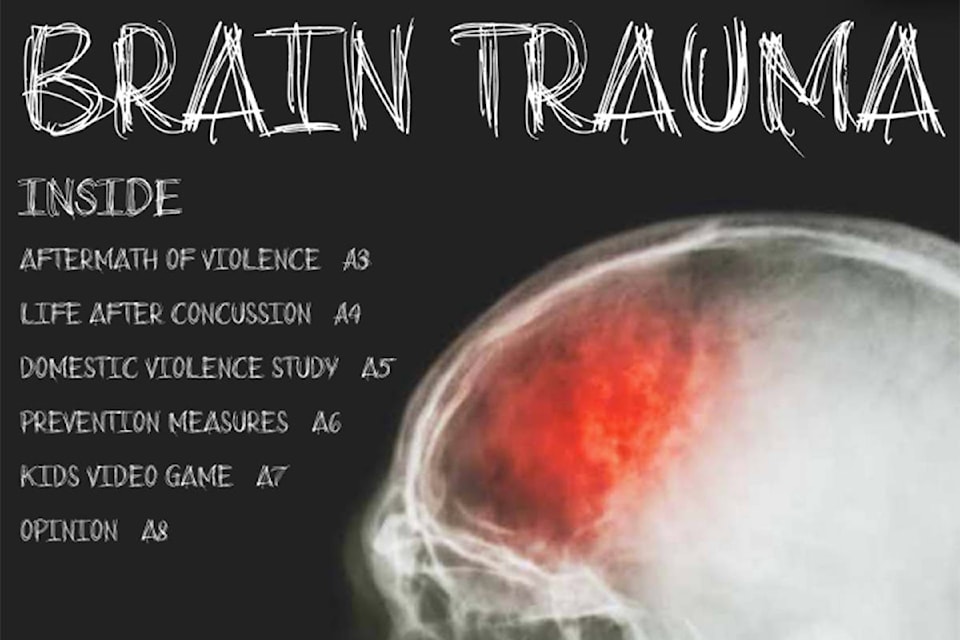As more we learn about the brain, we���߲��о����re learning more about how even the slightest injury can have the most dire consequences.
Over the years we���߲��о����ve heard from victims of assault, those who have suffered concussions in sports and recreation, and even those who have simply been in fender benders and struggled to make sense of a life after brain injury.
With one man���߲��о����s struggle after an assault as a starting point to look further into the issue of brain trauma, ���߲��о��� reporters wrote this series to shine a light on the dark corners of the mind.
Crime and punishing injuries: A victim���߲��о����s struggle with brain injury
By Kathy Michaels
It took just nine minutes to destroy the life John Smith spent decades building.
He was walking his daughter to school April 1, 2016, with her backpack slung over his shoulder.
���߲��о����We had literally just stopped holding hands after crossing the road and he got us,���߲��о���� said Smith, who asked to use a pseudonym for this article, due to ongoing fears of his assailant.
His attacker levied multiple blows to Smith���߲��о����s head, with a story that made headlines across the city, his life was forever changed.
Ex-athlete living in concussion���߲��о����s wake
By Warren Henderson
Giving up his lifelong passion was the most difficult decision Josh Leins ever had to make.
A series of concussions over the course of several years forced the Kelowna man to reluctantly leave his days on the soccer pitch behind for good.
A talented player coming up through Kelowna���߲��о����s minor system, the last and most severe of several head injuries ultimately led to Leins���߲��о���� retirement in 2010. During a game that summer for the Pacific Coast League���߲��о����s Okanagan Challenge, while leaping for a ball, Leins took the full brunt of an opponent���߲��о����s head square on his temple.
���߲��о����I kind of knew that would be it for me,���߲��о���� said Leins, 27, now living and working in Calgary.
Head injury prevention a ���߲��о����no brainer���߲��о����
By Alistair Waters
BrainTrust Canada wants everyone���߲��о����but especially the young���߲��о����to use their heads, not lose their heads���߲��о����when it comes to preventing brain injuries.
Play the game, save your brain
By Alistair Waters
Okanagan-based, not-for-profit association BrainTrust Canada is launching an innovative game to increase awareness of the seriousness of brain injury among youths aged 11 to 18.
The game, found online at www.protectyourhead.com, has three themes���߲��о����skateboarding, hockey and workplace safety���߲��о����all potential risks for brain injury.
Read More ���߲��о����
June is brain injury awareness month
By Carli Berry
The Pushor Mitchell Okanagan Symposium on Brain Injury is back for another year on Thursday, June 1 from 8 a.m. to 4 p.m. at the Ramada Kelowna Hotel and Conference Centre.
Project studies brain injury in domestic violence
By Carli Berry
A new project in the Okanagan is studying traumatic brain injury in survivors of domestic violence.
The study will be conducted by UBC Okanagan associate vice-principal for research Paul van Donkelaar and his team, along with the Kelowna Women���߲��о����s Shelter, the Elizabeth Fry Society, and the Kelowna Friendship Society.
The organizations will be recruiting participants for the study.
Editorial: Be cool and wear your helmet
By Kevin Parnell
It���߲��о����s always so nice to see young families out riding bikes together.
There���߲��о����s the littlest one, wobbling along on her princess bike, tassles and streamers and training wheels and a nice shiny new helmet all part of the package as she learns a skill never to be forgotten.
Her brother rides circles around her on his new BMX, his black skater-type helmet adorned with stickers, the chin strap safely done up in case of a tumble where head meets cement.
The kids are all armed and ready with the proper safety gear. How about mom and dad?
Michaels: Time for powers that be to deal with what contributes to crime
By Kathy Michaels
More than one in 10 men and nearly one in three women held in federal prisons have mental-health problems, according to 2009 figures from the Correctional Service of Canada. Those numbers represent a near-doubling in the total proportion of inmates with mental illnesses between 1997 and 2009.
Adding to that, nearly 80 per cent of prison inmates have suffered a brain injury.
What is the strategy for identifying or treating these issues before they become fodder for grisly headlines?



